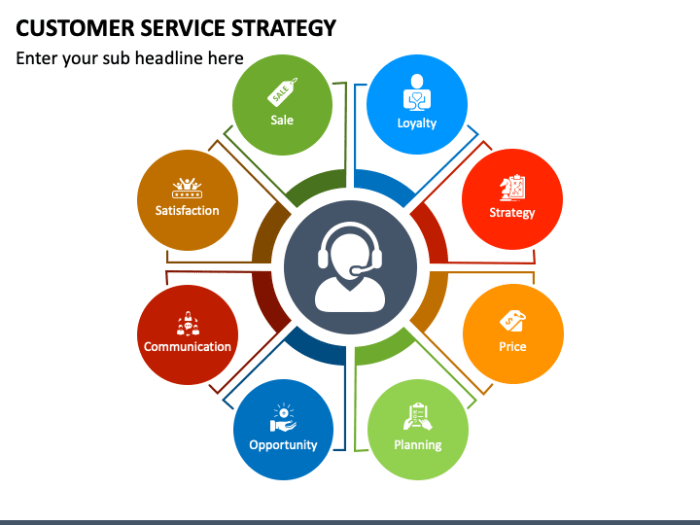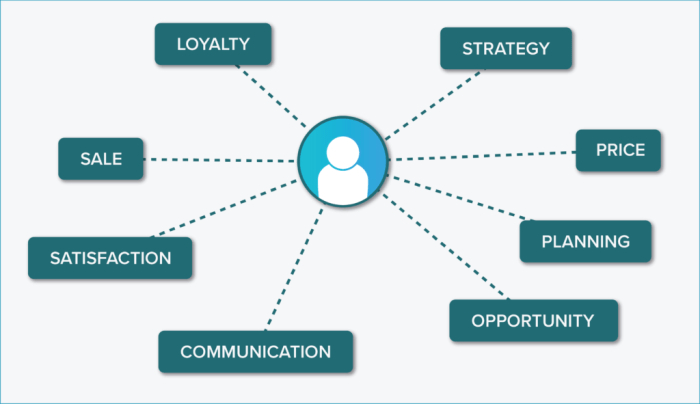Customer Service Strategies are the key to unlocking success in the business world. From proactive approaches to innovative technologies, this topic dives deep into the art of keeping customers happy and loyal.
Get ready to explore the ins and outs of effective strategies that companies use to stand out in a competitive market.
Importance of Customer Service Strategies
Customer service strategies are crucial for businesses as they play a significant role in shaping the overall customer experience. By implementing effective customer service strategies, businesses can enhance customer satisfaction, build trust, and create long-lasting relationships with their customers.
Examples of Successful Companies
- Amazon: Known for its focus on customer satisfaction, Amazon has set the bar high with its fast delivery, easy returns, and personalized recommendations.
- Zappos: Renowned for its exceptional customer service, Zappos goes above and beyond to meet customer needs, offering free shipping and a 365-day return policy.
- Ritz-Carlton: With a strong emphasis on personalized service, the Ritz-Carlton is celebrated for its attention to detail and commitment to exceeding customer expectations.
Impact on Customer Loyalty and Retention
Effective customer service strategies have a direct impact on customer loyalty and retention. When customers receive exceptional service, they are more likely to remain loyal to a brand, make repeat purchases, and recommend the business to others. By prioritizing customer service, businesses can create a loyal customer base that contributes to long-term success.
Types of Customer Service Strategies

Customer service strategies can be categorized into different types based on their approach and implementation. Let’s explore the various types of customer service strategies along with their advantages, disadvantages, and real-life examples.
Proactive Customer Service
Proactive customer service involves anticipating customer needs and addressing them before customers even realize they have an issue. This type of strategy aims to prevent problems before they occur, leading to increased customer satisfaction and loyalty. Advantages of proactive customer service include higher customer retention rates and improved brand reputation. However, a potential disadvantage is the high cost associated with implementing proactive measures.
An example of a company effectively using proactive customer service is Amazon, which offers proactive order tracking and delivery updates to keep customers informed.
Reactive Customer Service, Customer Service Strategies
Reactive customer service involves responding to customer inquiries and issues as they arise. While reactive customer service may not be as proactive as other strategies, it is essential for resolving immediate customer concerns. Advantages of reactive customer service include quick problem resolution and personalized support. However, a disadvantage is that it may lead to customer dissatisfaction if issues are not addressed promptly.
An example of a company known for effective reactive customer service is Zappos, which is renowned for its responsive and customer-centric approach to problem-solving.
Self-Service Customer Service
Self-service customer service empowers customers to find solutions to their problems independently through online resources, FAQs, tutorials, and chatbots. This type of strategy provides customers with instant access to information and support, reducing the need for direct interaction with customer service representatives. Advantages of self-service customer service include cost savings for businesses and increased customer convenience. However, a potential disadvantage is the lack of human touch and personalized assistance.
An example of a company successfully implementing self-service customer service is Apple, which offers extensive online resources and support forums for customers to troubleshoot issues on their own.
Implementing Effective Customer Service Strategies

Implementing effective customer service strategies is crucial for businesses to build strong relationships with their customers and enhance overall satisfaction. It involves creating a plan and executing it systematically to ensure that customers receive the best service possible.
Steps to Create and Implement a Customer Service Strategy
- Identify customer needs and expectations: Conduct surveys, analyze feedback, and gather data to understand what customers want.
- Set clear goals and objectives: Define specific targets for improving customer service and align them with the overall business objectives.
- Develop an action plan: Create a detailed roadmap outlining the steps to be taken to enhance customer service delivery.
- Train and empower employees: Provide training to staff members on effective customer service techniques and empower them to make decisions to resolve customer issues.
- Implement technology solutions: Utilize tools and systems that can streamline customer interactions and improve service efficiency.
- Monitor and adjust: Regularly track the progress of the customer service strategy, gather feedback, and make adjustments as needed.
Role of Training and Development in Ensuring Successful Implementation
Training and development play a crucial role in ensuring the successful implementation of customer service strategies. By providing employees with the necessary skills and knowledge, businesses can improve customer interactions and enhance overall service quality.
Best Practices for Monitoring and Evaluating the Effectiveness of Customer Service Strategies
- Collect customer feedback: Gather feedback through surveys, reviews, and direct interactions to assess customer satisfaction levels.
- Track key performance indicators (KPIs): Monitor metrics such as response times, resolution rates, and customer retention to evaluate the impact of the customer service strategy.
- Conduct regular reviews: Schedule periodic reviews to analyze the effectiveness of the strategy and identify areas for improvement.
- Benchmark against competitors: Compare your customer service performance with industry benchmarks to gauge your standing and identify areas of competitive advantage.
- Celebrate successes and learn from failures: Recognize and reward achievements in customer service, while also learning from mistakes to continuously improve the strategy.
Technology in Customer Service Strategies
Technology plays a crucial role in enhancing customer service strategies by providing tools and solutions to improve efficiency and effectiveness. From AI chatbots to CRM software, companies can leverage various technologies to streamline their customer service processes and deliver a seamless experience to their customers.
AI Chatbots
AI chatbots are virtual assistants powered by artificial intelligence that can interact with customers in real-time, providing instant support and responses to inquiries. These chatbots can handle routine queries, freeing up human agents to focus on more complex issues and improving response times.
CRM Software
Customer Relationship Management (CRM) software helps companies manage customer data, track interactions, and personalize communication. By centralizing customer information, companies can create more personalized experiences, anticipate customer needs, and build stronger relationships.
Challenges and Benefits of Integrating Technology
- Challenges:
- Initial investment costs
- Training employees to use new technology
- Potential technical glitches or downtime
- Benefits:
- Improved efficiency and productivity
- 24/7 availability for customer support
- Enhanced customer experience through personalization
Examples of Companies Using Technology Effectively
Companies like Amazon, Starbucks, and Zappos are known for effectively integrating technology into their customer service strategies. Amazon uses AI-powered recommendation engines to personalize product suggestions, Starbucks leverages mobile apps for ordering and loyalty programs, and Zappos uses AI chatbots for quick customer support.
